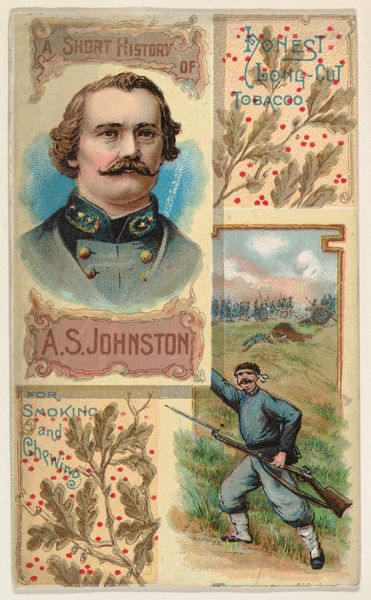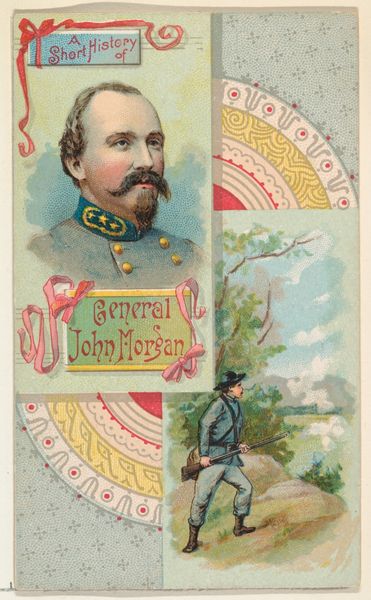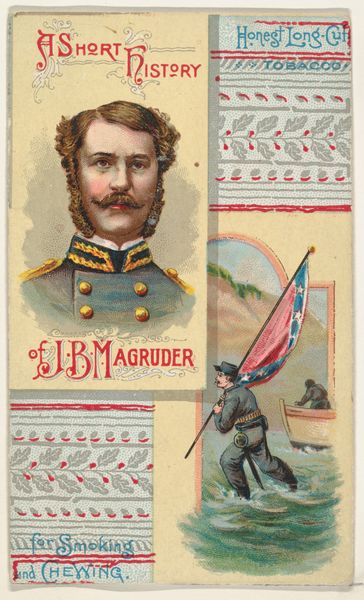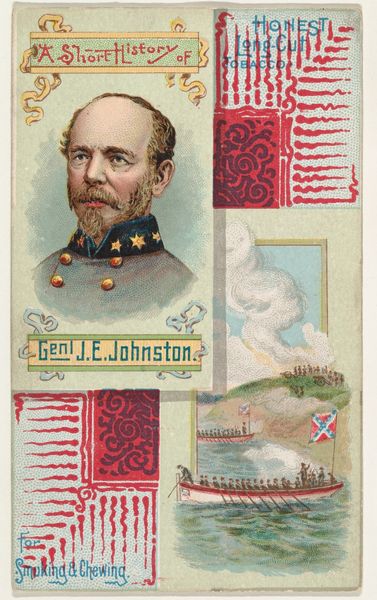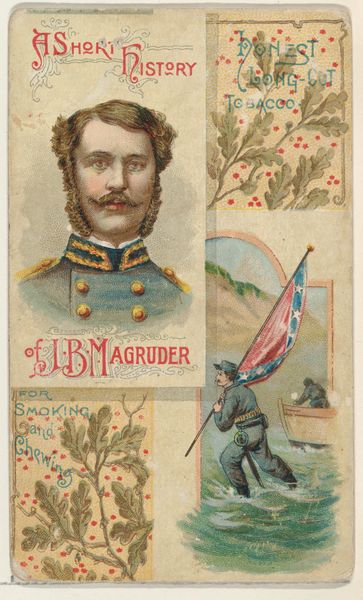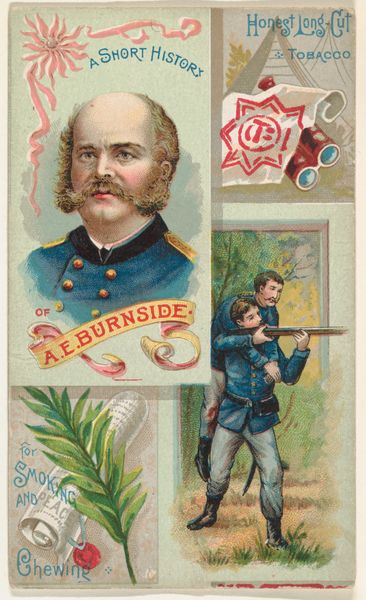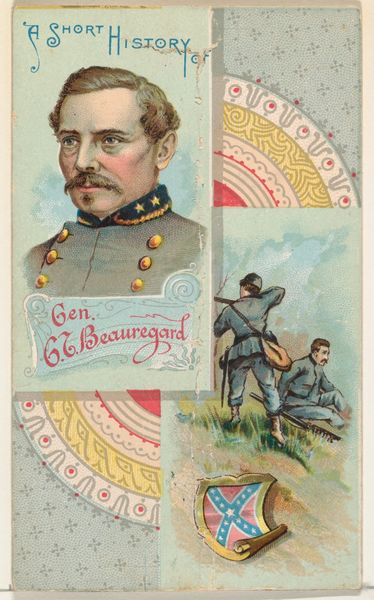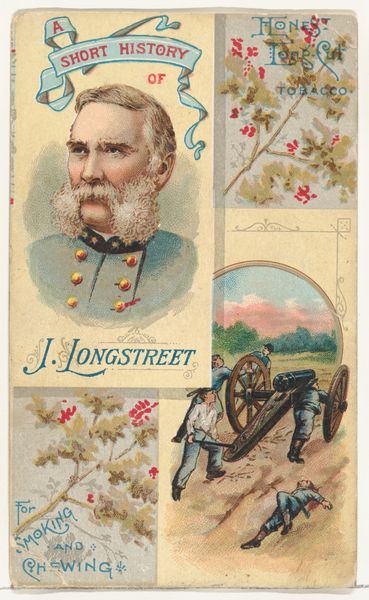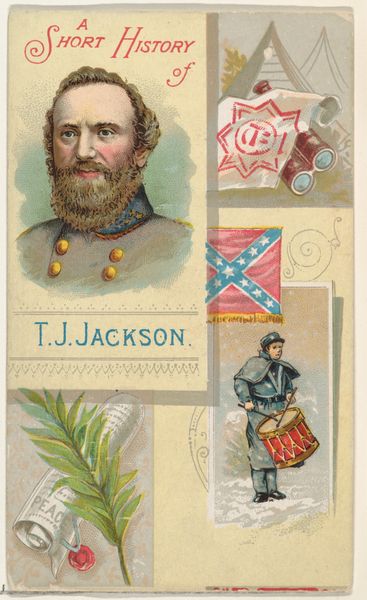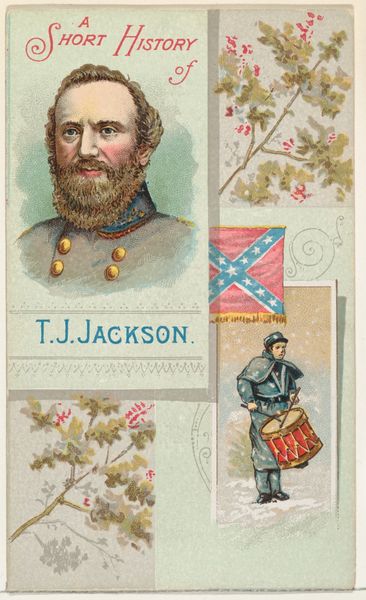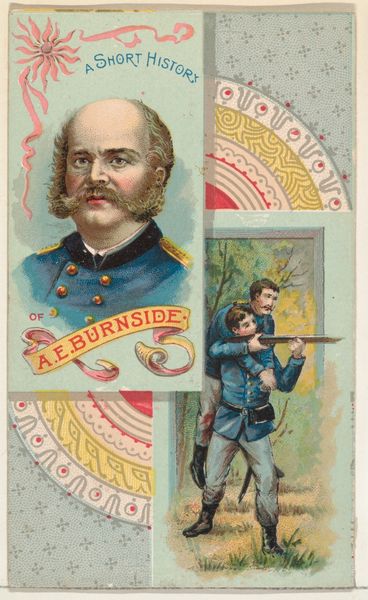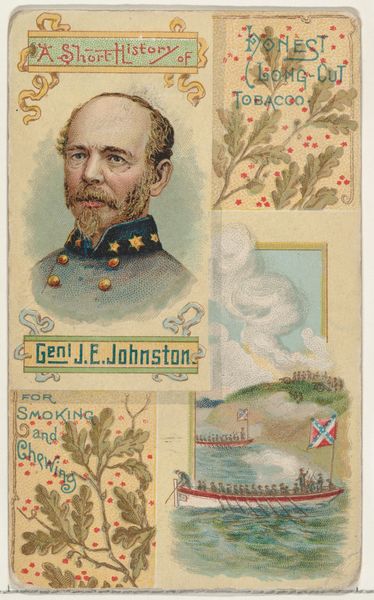
A Short History of General A. S. Johnston, from the Histories of Generals series (N114) issued by W. Duke, Sons & Co. to promote Honest Long Cut Smoking and Chewing Tobacco 1888
0:00
0:00
Dimensions: Sheet: 4 3/16 × 2 1/2 in. (10.7 × 6.4 cm)
Copyright: Public Domain
Curator: This print, dating back to 1888, comes to us from W. Duke, Sons & Co. Titled "A Short History of General A. S. Johnston," it's part of their "Histories of Generals" series used to promote their Honest Long Cut Smoking and Chewing Tobacco. What strikes you about it initially? Editor: The layering, I'd say, but more, the attempt at sophistication undermined by this, well, obvious commodification, the sheer banality of connecting war heroes to tobacco...it leaves me unsettled. Curator: Absolutely. The print’s materiality is crucial; it’s not fine art intended for a gallery, but a commercial object designed to be distributed and consumed. How does this context shape its message about General Johnston? Editor: Well, that the General, or perhaps, his perceived virtues like 'honesty' and 'bravery' can be literally ingested or incorporated through this product! These types of marketing prints romanticize the Confederate past. It links smoking to ideas of Southern heroism, glossing over slavery and oppression for a commercial aim. Curator: The use of the printmaking technique—its colors and details—also warrants examination. There is this flatness almost evocative of ukiyo-e. What about the inclusion of what looks like decorative pattern elements—their contribution? Editor: Right. I suppose the artist is also drawing on Ukiyo-e tropes in that regard, for example, the depiction of battlefield figures. In effect, to promote mass consumption. It certainly draws you in at the formal level. Curator: Precisely. The interplay of artistic traditions and commercial needs. Editor: I notice that the card is quite literally split in two—A. S. Johnston’s biography (illustrated on one half), as he stares in to the viewer’s eye, seems almost wholly disconnected from what follows. This points to this disjuncture that tobacco’s manufacturer is capitalizing on here: the myth and the matter, the biography and the battlefield, both literally distanced but united on a small paper rectangle. Curator: This was such a rich discussion. It makes one think about how we attach values to materials, how cultural production becomes a commodity and vice versa. Editor: Indeed. Understanding art in the age of capitalism requires decoding the social, political, and historical contexts ingrained within it. This tobacco card holds many lessons about those histories.
Comments
No comments
Be the first to comment and join the conversation on the ultimate creative platform.
